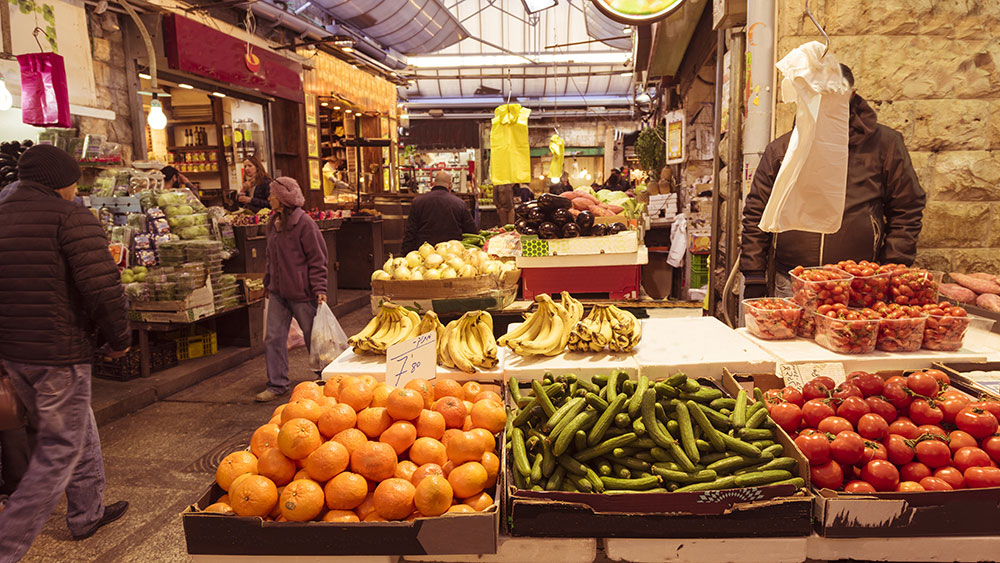
Shoppers peruse vegetable stands at Jerusalem’s Mahane Yehuda Market. The market traces back to the 19th century.
By day, Jerusalem’s Mahane Yehuda Market (nicknamed “The Shuk”) is buzzing with hundreds of vendors selling spices, freshly baked sweets, and fresh produce piled in colourful stacks on tables lining the streets. At night, the scene transforms as the market tracing back to the 19th century takes on a more modern feel with craft beer bars and gastropubs. This contrast between trendy and traditional is what’s helping Jerusalem revamp its reputation and attract a new generation of conference attendees to the Holy City.
Jerusalem was deemed one of the hottest travel destinations of 2018 by Bloomberg thanks to the growth of inbound arrivals, which increased by nearly 38 percent, reaching 4.8 million. “Jerusalem’s tourism industry has had its ups and downs because of regional instability,” explains Anat Landa, convention bureau manager at the Jerusalem Conventions and Visitors Bureau (JCVB). “However, in the last decade, the image of Jerusalem as a tourist destination has completely transformed, largely due to massive efforts by the government and municipality to put Jerusalem on the tourist map — and keep it there. Recent indications of success include TripAdvisor ranking Jerusalem fourth in a list of the most promising places for vacation across the world.”
In their daily work promoting Jerusalem as a conference destination, the JCVB is working closely with Israel’s scientific community to increase bids for events in Jerusalem. Scientific conferences, including this summer’s InSITE 2019: Informing Science and IT Education event, dot the city’s conference calendar. JCVB also focuses on another side of the city — tourism. And that focus includes what attendees can do outside the conference hall and where they can go after a day of meetings.
Beyond Ballrooms
Jerusalem is one of the oldest cities in the world, with structures and artefacts dating back more than 3,000 years. Gala dinners held in quarries built during King Herod’s time here can be a reality. “For centuries, people have been singing and praying about Jerusalem. … So it is only natural that it would be a desirable destination,” Landa says.
One way to give delegates a sense of the country’s history is through a tour of one of its largest and most significant cultural institutions — the Israel Museum. After touring the Shrine of the Book (where the Dead Sea Scrolls are housed), delegates will more fully realize the scale of Jerusalem’s history. One bonus: They can network in a space filled with ancient masks and other rare objects instead of in just another ballroom.
Cosmopolitan City
“We are marketing and promoting Jerusalem as an international city. People already know about Jerusalem being the center of three major religions, but our job is to show the 21st century Jerusalem, which is a vibrant, innovative, entrepreneurial, creative, and charismatic city,” Landa explains. “Jerusalem boasts more than 70 museums — a large number given how small the city actually is. There are international festivals, concerts, theater productions, and so much more waiting for conference delegates to enjoy.”
In the past, visitors would add Jerusalem to their checklist of places to see for a few hours while visiting Israel, quickly touring the Old City and then continuing on with their trip. But for the last decade, the city is hosting more overnight stays. “Instead of staying three hours,” notes Landa, “tourists stay for at least three days.”
This article was contributed by Boardroom and edited for use in Communique.

